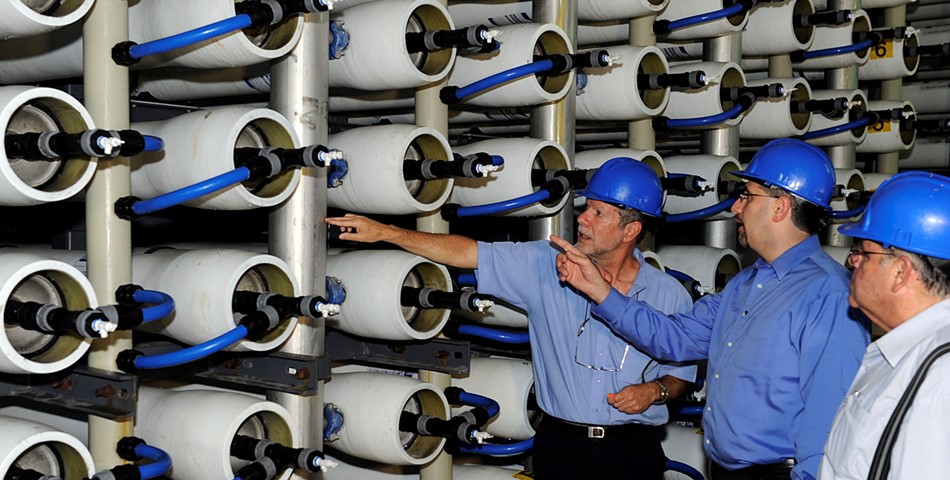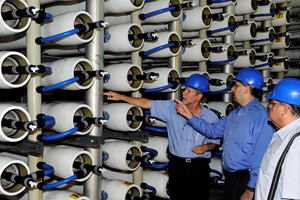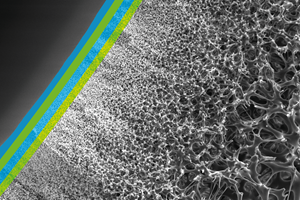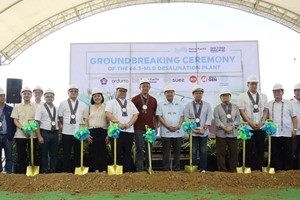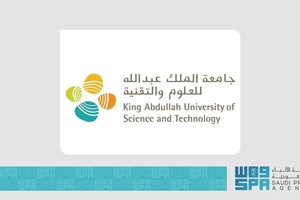Nanofiltration is the recent advancement in the membrane filtration process for surface water filtration and fresh groundwater filtration process. This type of filtration helps in water softening and removal of disinfection from water. This type of membrane filtration method employs nanometer-sized cylindrical through-pores that pass through the membrane at 90°. The pore-size ranges from 1 to 10 nanometers. These nanofiltration membranes are made from polymer-based thin films. The most commonly used polymeric material is polyethylene terephthalate. Sometimes, aluminum-based membranes are also used for nano-filtration applications.
The global market for nanofiltration membranes is expected to grow to USD445 million by 2019, with a five-year compound annual growth rate (CAGR) of 15.6 percent, according to a report by BCC Research. The water and wastewater treatment segment dominates the overall market with 74.6 percent market share. Nanofiltration is a pressure-driven, membrane-based separation technology utilizing membranes that are capable of retaining nanoscale particles and molecules. With three main types of nanofiltration membranes — polymeric, inorganic (e.g., ceramic and carbon), and hybrid (or organic/inorganic) — this technology is finding increasing application across a broad range of industries, including water and wastewater treatment, food and beverage, chemical and petrochemical, pharmaceutical and biomedical, metalworking, agriculture, textiles, and solid waste management. Membranes for water and wastewater treatment represent by far the largest share of the market. This segment alone is expected to reach USD338 million in 2019 and register a healthy CAGR of 16 percent. Revenues within this category are primarily driven by sales of nanofiltration membranes for water softening, desalination, and wastewater treatment.


According to Transparency Market Report, Nanofiltration membranes offer many advantages over traditional membranes. A key advantage of these membranes is during the process of retaining calcium and magnesium ions in water softening application, as used in ion-exchangers. Another major advantage of nanofiltration membranes is performing gentle molecular separation. These properties makes the nanofiltration membrane apt for the water-treatment and pharmaceutical sectors. Therefore, the increase in demand for potable water and stringent government regulations associated with water pollution are key drivers for the rise in demand for nanotechnology membranes. A key disadvantage of nanofiltration technology is the high cost and maintenance of the membranes. Repairs and replacement of these membranes is dependent on total dissolved solids, flow rate, and components of the feed.


In terms of geography, the global nanofiltration membranes market can be segmented into North America, Asia Pacific, Europe, Latin America, and Middle East & Africa. The nanofiltration membrane market in Asia Pacific is anticipated to expand notably during the forecast period due to significant expansion of the chemical industry in countries such as China, India, Malaysia, South Korea, and Japan. North America and Europe dominate the global nanofiltration membrane market. This is due to the presence of advanced technologies and continued research & development activities in the field of nano-technology. Latin America is anticipated to offer high growth opportunities for the nanofiltration membranes market, due to the considerable expansion of the pharmaceutical & medical industry in the region. Middle East & Africa also holds a significant share of the nanofiltration membrane market. Purification of gas condensates is a major application sector of nanofiltration membranes in the region.
Fatima Saab
Interim Editorial & Research Manager
Social Media Officer



